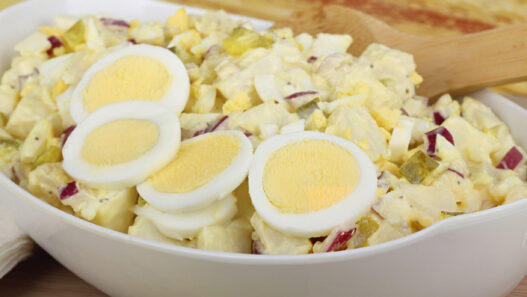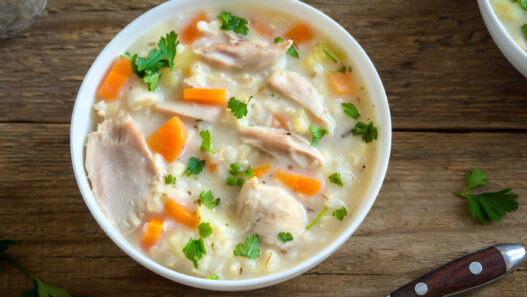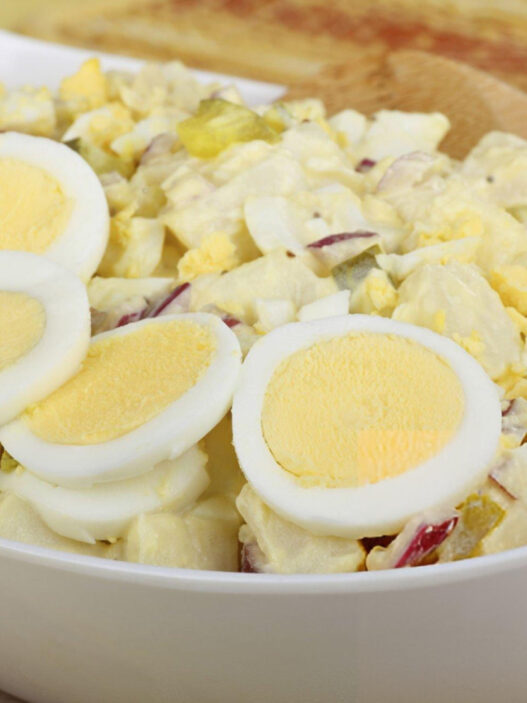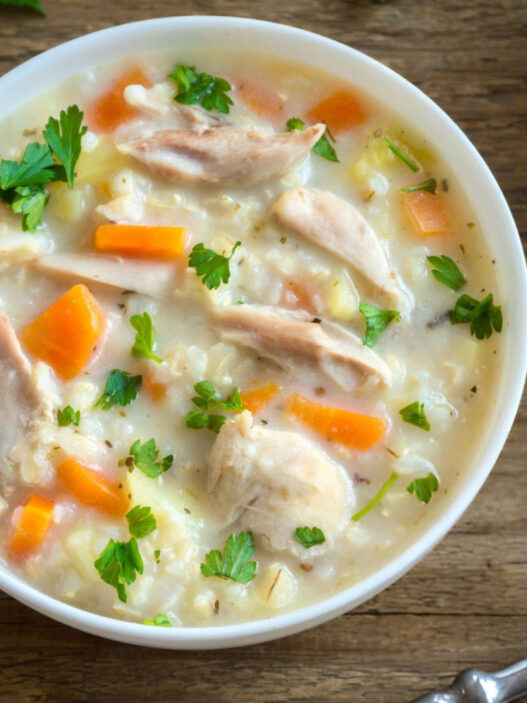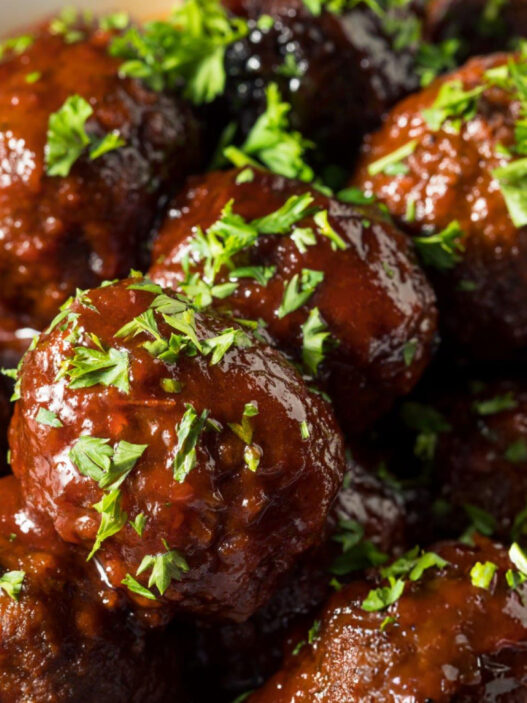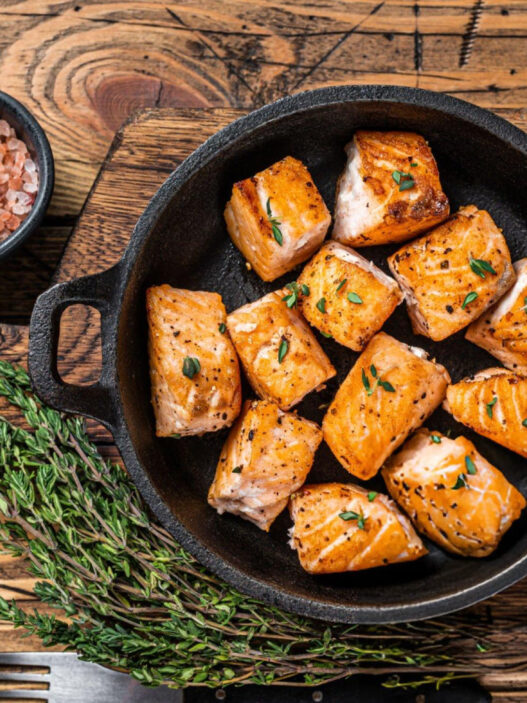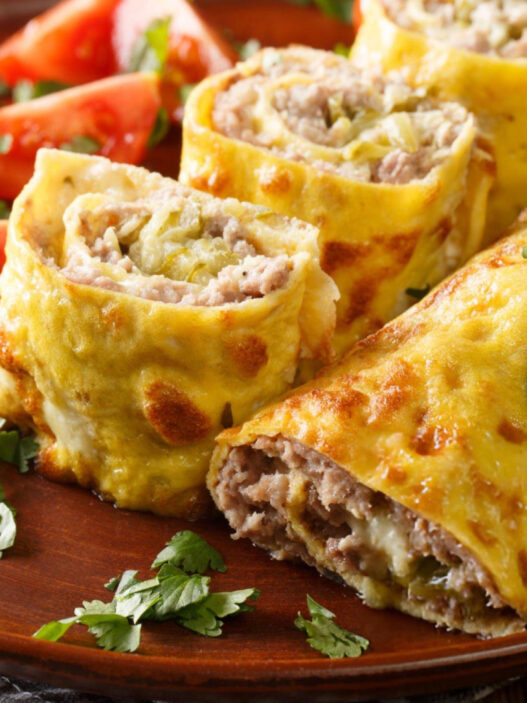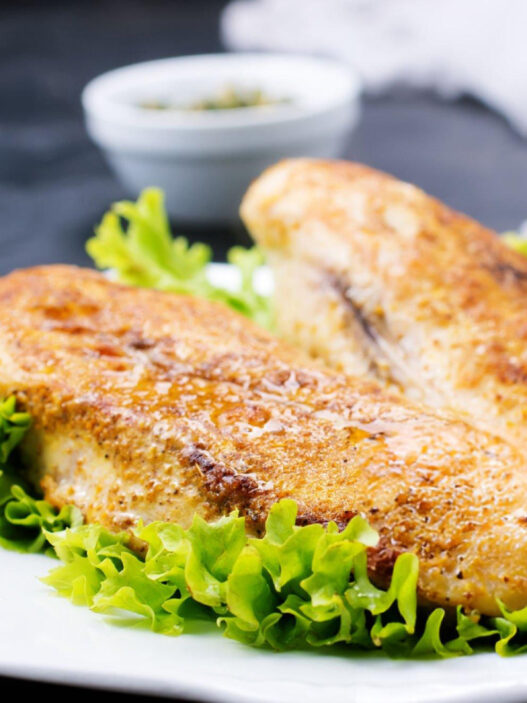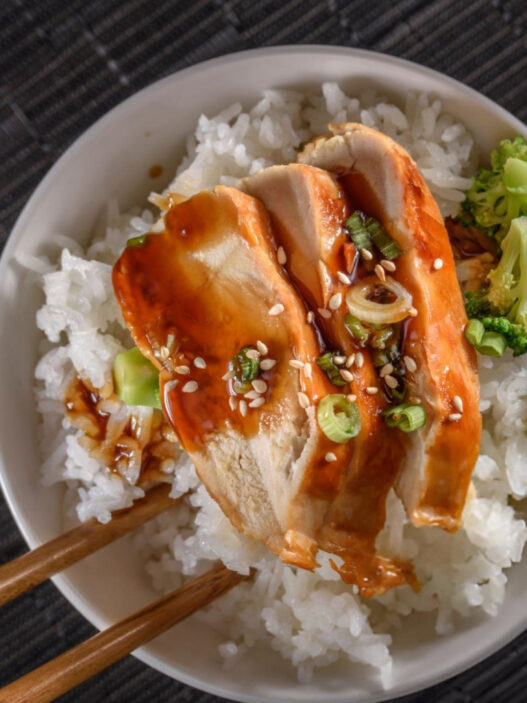Soft, airy, and delicately flavored, poha idli brings a refreshing variation to the traditional South Indian breakfast staple. These idlis are pillowy and light, with a gentle taste and melt-in-your-mouth texture that sets them apart from regular idlis. The addition of poha, or parched rice, introduces a subtle softness that enhances the overall bite, making this dish a comforting choice whether you’re preparing a weekday breakfast or a relaxed weekend brunch.
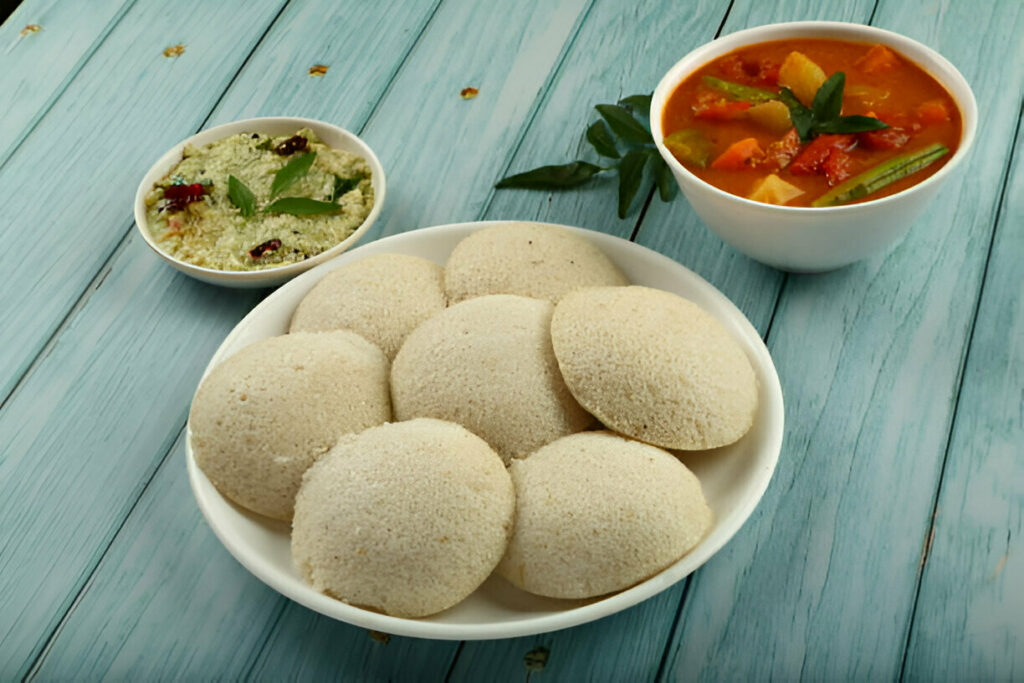
Ingredients Overview
Each ingredient plays a distinct role in bringing structure, texture, and taste to poha idlis. At the heart of the recipe lies the combination of rice and poha—two staples that complement each other effortlessly. While the rice offers body and structure, the poha imparts a tender, airy softness that gives these idlis their character.
The urad dal, a vital fermenting agent, contributes to the batter’s lightness and volume. It helps create that porous, spongy texture essential to good idlis. Fenugreek seeds, though used in small quantities, enhance fermentation and lend a subtle earthy undertone that rounds out the flavor.
Optional ingredients like sugar and baking soda further support fermentation and softness. Sugar acts as a mild activator in colder climates, while baking soda can be added post-fermentation to ensure the idlis remain cloud-like, especially if the batter hasn’t risen well.
Step-by-Step Preparation Guide
Begin the preparation by soaking the rice, urad dal, and fenugreek seeds. Rinse them thoroughly to remove surface starch and impurities. The ingredients are then immersed in water to soften and prepare them for grinding. In a separate bowl, rinse the thick poha gently, then combine it with the soaking mixture. This fusion allows all components to absorb water evenly, creating a cohesive blend.
After soaking for 5 to 6 hours, the mixture is ready to be ground. Using a wet grinder ensures a smoother consistency and optimal aeration. The batter should be thick yet fluid, with a texture resembling coarse semolina or idli rava. Grinding in batches prevents the motor from overheating and ensures uniform blending. Once ground, the batter is poured into a large bowl, salt and sugar are stirred in, and the mixture is set aside for fermentation.
Fermentation is a key step that cannot be rushed. In warmer climates, the batter rises beautifully within 8 to 9 hours, while cooler conditions may require more time. A well-fermented batter appears light, slightly bubbly, and subtly aromatic. If needed, a pinch of baking soda can be folded in just before steaming to guarantee extra softness.
Grease the idli moulds lightly with oil and fill each cavity with the fermented batter, leaving space for expansion. Steam the idlis in a preheated steamer or pressure cooker (without the whistle) for 12 to 15 minutes, until a toothpick inserted comes out clean. Allow them to rest briefly before unmoulding with a wet spoon or knife. The warm, fluffy idlis are now ready to be served.

Recipe Tips & Frequently Asked Questions
Selecting the right variety of rice and poha
Choose idli dosa rice or parboiled rice for the best texture. Thick poha works better than thin, as it holds moisture and blends well with the batter.
How to get the batter consistency just right
The batter should be thick yet pourable. Add the reserved soaking water gradually to adjust consistency during grinding.
When and why to use sugar or baking soda
Sugar can assist fermentation in cooler climates without affecting taste. Baking soda is optional but helpful if the batter lacks rise.
How to prevent idlis from sticking to moulds
Always grease the moulds thoroughly. Let the idlis rest a minute post-steaming before unmoulding to maintain shape and texture.
Can I use split urad dal instead of whole urad dal?
Yes, split urad dal works well and doesn’t impact the end result.
What can I use if I don’t have idli rice?
Parboiled rice or regular short-grain rice can be substituted, though texture may vary slightly.
How can I tell if my batter has fermented properly?
It will look airy and puffed up with a slightly tangy aroma.
Can I make the batter in advance and store it?
Yes, fermented batter can be refrigerated for 2 to 3 days. Bring to room temperature before steaming.
What to Serve With This Recipe
Poha idlis pair wonderfully with classic South Indian condiments like coconut chutney and sambar. A smooth coconut chutney with green chilies, tempered with mustard seeds and curry leaves, is the perfect companion. For a heartier experience, serve alongside onion sambar or a vibrant vegetable sambar.
To explore beyond tradition, try serving these idlis with tomato chutney, mint-coriander dip, or even peanut chutney for a change of pace. Turn your meal into a nourishing brunch by adding a side of seasoned potato fry or steamed lentil salad. These idlis also work well in lunchboxes or as light dinner fare.
Variations to Try
Infuse the batter with finely grated carrots, chopped green chilies, or crushed curry leaves for an added layer of flavor and texture. You can also sprinkle toasted mustard seeds or cumin seeds on the batter before steaming for a mildly spiced version.
Transform the same batter into appe (paniyaram) using a special appe pan or use it to make soft uthappams topped with chopped onions and herbs. The batter’s versatility makes it ideal for multiple South Indian steamed dishes with simple tweaks.
Poha idli is a delightful twist on a beloved classic—light, fluffy, and comforting in every bite. It’s a recipe that brings warmth to your table, whether for breakfast, brunch, or a simple homestyle dinner. With its gentle flavor and soft texture, it’s a crowd-pleaser that blends tradition with simplicity, making every meal feel just a little more special.
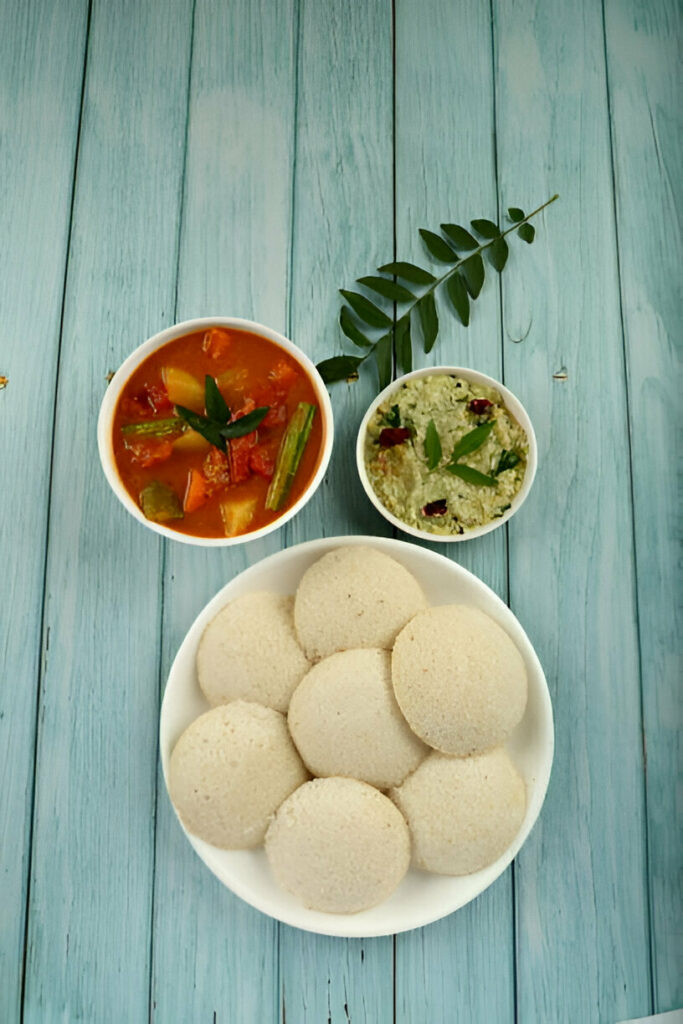
Ingredients
½ teaspoon rock salt (edible and food-grade)
1/8 to ¼ teaspoon baking soda (optional)
½ teaspoon sugar (optional)
1 cup thick poha (parched rice or aval), approximately 80 grams
3 tablespoons whole urad dal (husked whole black gram) or 40 grams (split husked urad dal can also be used)
¼ teaspoon fenugreek seeds (methi seeds)
1 cup idli dosa rice or parboiled rice, about 200 grams
2.5 cups water for soaking
1 cup water for grinding
Oil for greasing the idli moulds
Instructions
Soaking
Start by placing the idli dosa rice (or parboiled rice), whole urad dal, and fenugreek seeds in a bowl or deep pan. Rinse thoroughly a few times to eliminate impurities. Add 2.5 cups of water and allow it to soak. In a separate bowl, rinse the thick poha once or twice to remove excess starch. Drain the poha and add it to the same bowl containing the rice, dal, and fenugreek seeds. Stir everything together and cover. Let the mixture soak undisturbed for 5 to 6 hours.
Grinding Poha Idli Batter
Once soaked, strain the mixture, keeping the water aside to adjust the batter consistency later. Transfer half of the soaked mixture to a wet grinder jar, adjusting batch size depending on the capacity of your grinder. Add ½ cup of water and grind the ingredients until smooth—the rice should resemble the texture of idli rava. Transfer the batter into a large mixing bowl. Repeat the same process with the remaining mixture, using the rest of the water as needed. Ensure the batter is well-blended and smooth but not runny. If your grinder heats up, let it cool before resuming. Add rock salt and sugar to the batter and stir until fully incorporated. In warmer climates, sugar can be skipped.
Fermenting Poha Idli Batter
Cover the bowl with a lid and let it sit in a warm, draft-free area for 8 to 9 hours or longer, depending on the ambient temperature. Once fermented, if desired, add baking soda and mix thoroughly—this is optional and helpful if the batter hasn’t risen sufficiently or you prefer extra soft idlis.
Making Poha Idli
Grease the idli moulds with oil to prevent sticking. Pour the fermented batter into the moulds, filling each cavity just enough to allow room for the idlis to rise while steaming. Prepare your steamer or cooker by adding 2 to 2.5 cups of water and bringing it to a boil. Carefully place the idli stand inside the steamer or cooker. For electric steamers and idli cookers, cover and steam. If using a pressure cooker, remove the whistle and close the lid securely.
Steam the idlis for about 12 to 15 minutes. Cooking time may vary slightly depending on your equipment. When a toothpick inserted into the center comes out clean and dry, the idlis are done. Allow them to rest for a couple of minutes before removing. Use a wet spoon or butter knife to gently lift the idlis from the moulds. Transfer the warm idlis to a casserole or insulated container to keep them soft and hot.
Serve poha idlis alongside freshly made coconut chutney and a comforting bowl of onion sambar or mixed vegetable sambar for a satisfying South Indian meal.
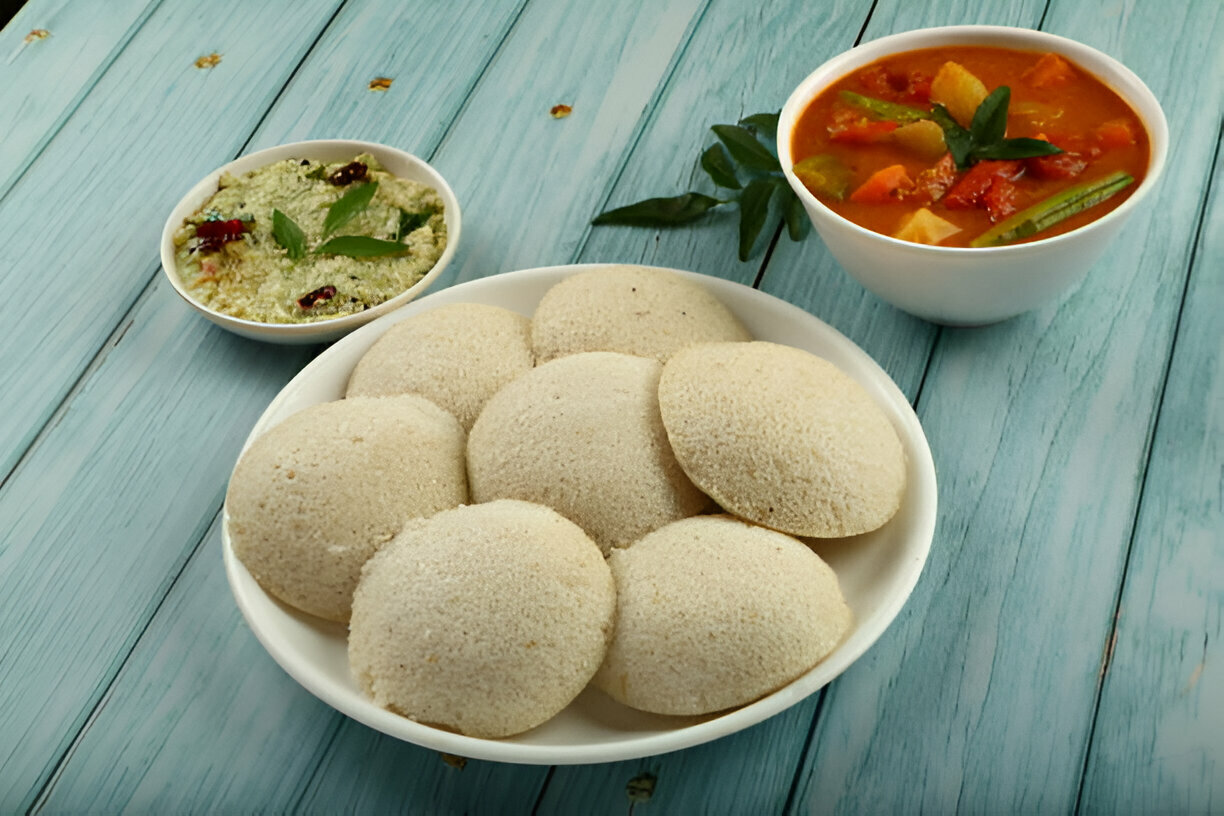
Poha Idli Recipe
Ingredients
- ½ teaspoon rock salt edible and food-grade
- 1/8 to ¼ teaspoon baking soda optional
- ½ teaspoon sugar optional
- 1 cup thick poha parched rice or aval, approximately 80 grams
- 3 tablespoons whole urad dal husked whole black gram or 40 grams (split husked urad dal can also be used)
- ¼ teaspoon fenugreek seeds methi seeds
- 1 cup idli dosa rice or parboiled rice about 200 grams
- 2.5 cups water for soaking
- 1 cup water for grinding
- Oil for greasing the idli moulds
Instructions
Soaking
- Start by placing the idli dosa rice (or parboiled rice), whole urad dal, and fenugreek seeds in a bowl or deep pan. Rinse thoroughly a few times to eliminate impurities. Add 2.5 cups of water and allow it to soak. In a separate bowl, rinse the thick poha once or twice to remove excess starch. Drain the poha and add it to the same bowl containing the rice, dal, and fenugreek seeds. Stir everything together and cover. Let the mixture soak undisturbed for 5 to 6 hours.
Grinding Poha Idli Batter
- Once soaked, strain the mixture, keeping the water aside to adjust the batter consistency later. Transfer half of the soaked mixture to a wet grinder jar, adjusting batch size depending on the capacity of your grinder. Add ½ cup of water and grind the ingredients until smooth—the rice should resemble the texture of idli rava. Transfer the batter into a large mixing bowl. Repeat the same process with the remaining mixture, using the rest of the water as needed. Ensure the batter is well-blended and smooth but not runny. If your grinder heats up, let it cool before resuming. Add rock salt and sugar to the batter and stir until fully incorporated. In warmer climates, sugar can be skipped.
Fermenting Poha Idli Batter
- Cover the bowl with a lid and let it sit in a warm, draft-free area for 8 to 9 hours or longer, depending on the ambient temperature. Once fermented, if desired, add baking soda and mix thoroughly—this is optional and helpful if the batter hasn’t risen sufficiently or you prefer extra soft idlis.
Making Poha Idli
- Grease the idli moulds with oil to prevent sticking. Pour the fermented batter into the moulds, filling each cavity just enough to allow room for the idlis to rise while steaming. Prepare your steamer or cooker by adding 2 to 2.5 cups of water and bringing it to a boil. Carefully place the idli stand inside the steamer or cooker. For electric steamers and idli cookers, cover and steam. If using a pressure cooker, remove the whistle and close the lid securely.
- Steam the idlis for about 12 to 15 minutes. Cooking time may vary slightly depending on your equipment. When a toothpick inserted into the center comes out clean and dry, the idlis are done. Allow them to rest for a couple of minutes before removing. Use a wet spoon or butter knife to gently lift the idlis from the moulds. Transfer the warm idlis to a casserole or insulated container to keep them soft and hot.
- Serve poha idlis alongside freshly made coconut chutney and a comforting bowl of onion sambar or mixed vegetable sambar for a satisfying South Indian meal.

